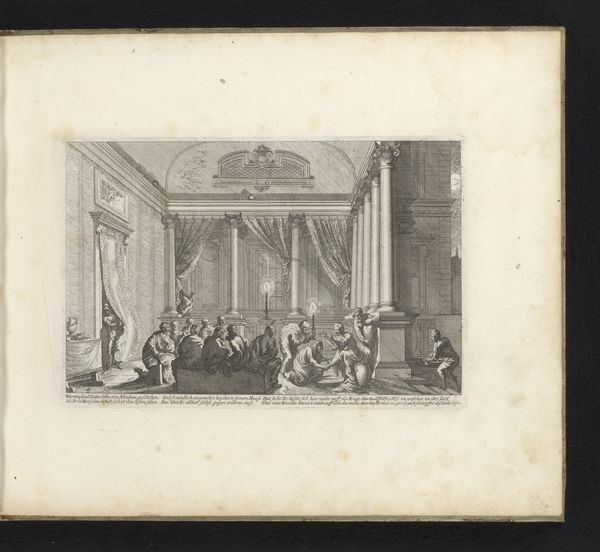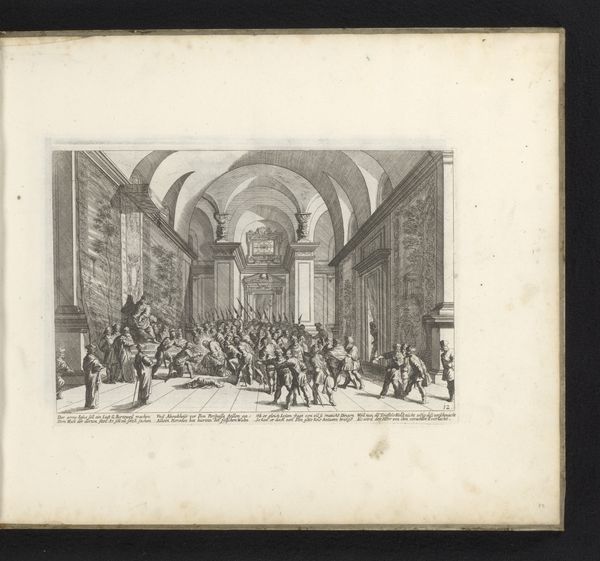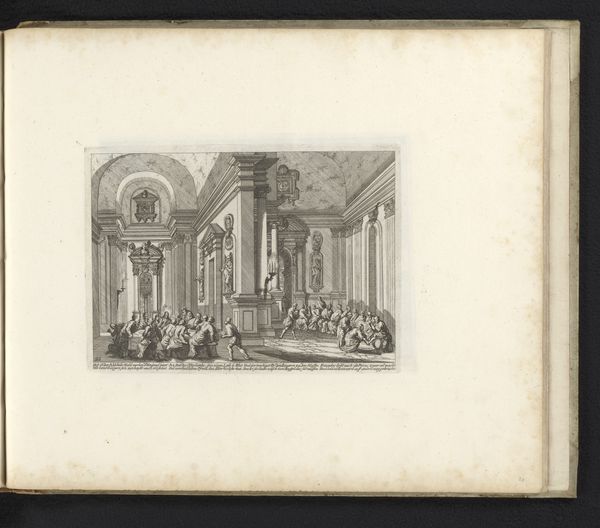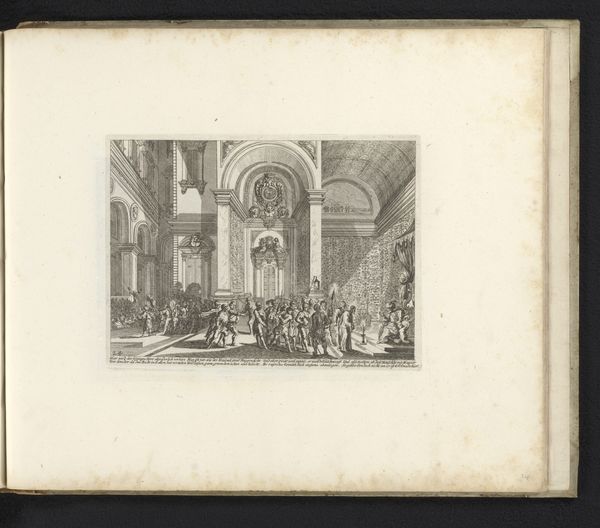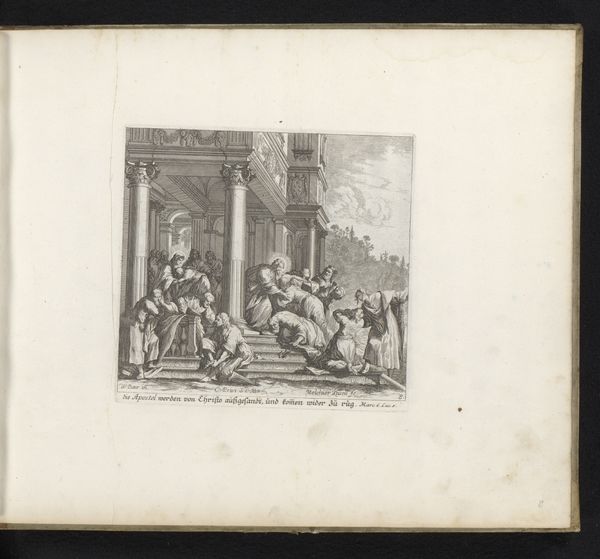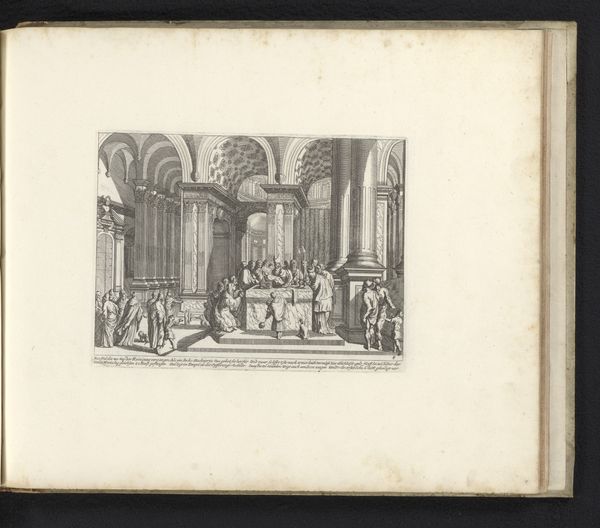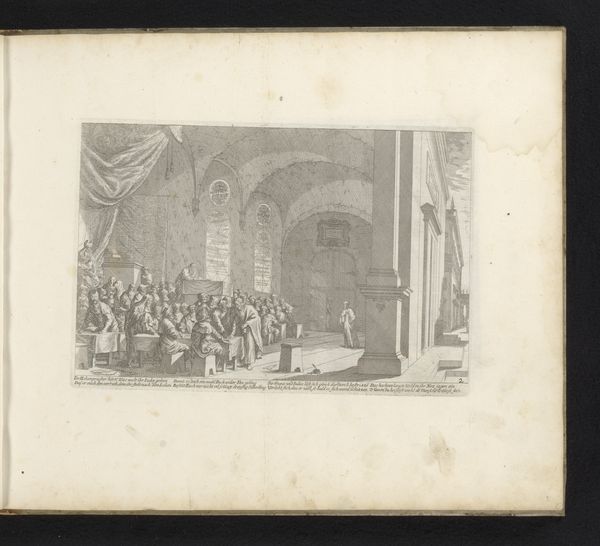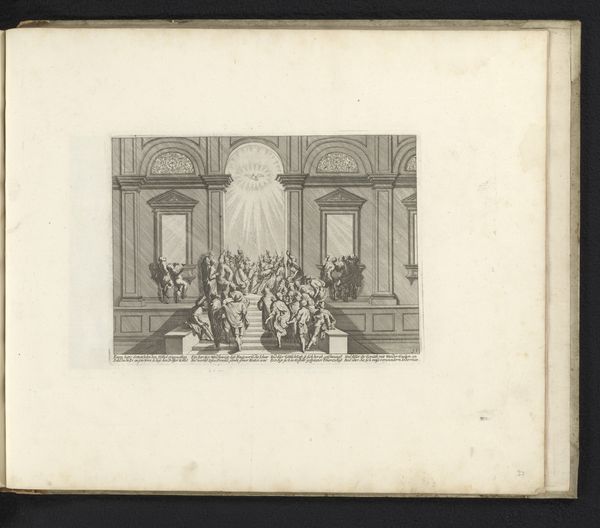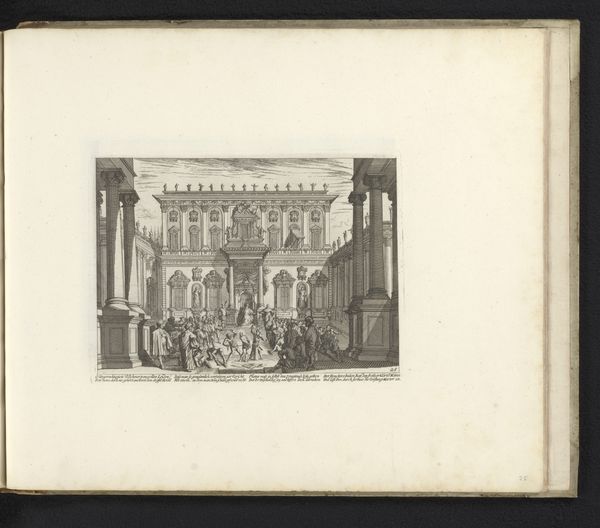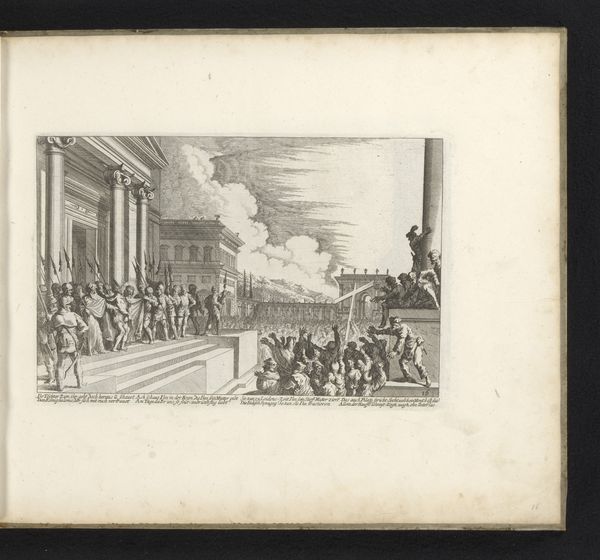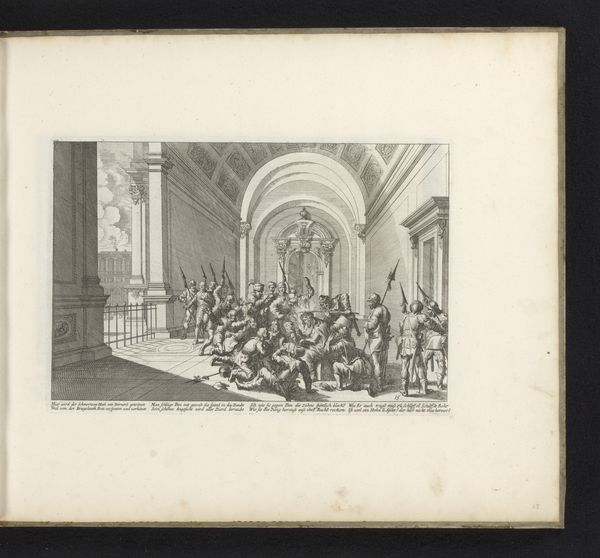
print, engraving
#
baroque
#
ink paper printed
# print
#
figuration
#
line
#
cityscape
#
history-painting
#
engraving
Dimensions: height 170 mm, width 255 mm
Copyright: Rijks Museum: Open Domain
Editor: Here we have Melchior Küsel's "Berouw van Judas," created sometime between 1670 and 1682. It's an engraving, so ink on paper, depicting a dramatic scene with many figures around a grand doorway. There is something theatrical about the whole composition. What do you see in this piece, beyond the immediate subject matter? Curator: This engraving allows us to delve into the intersection of religious narrative, social commentary, and artistic expression within 17th-century Europe. The figure of Judas, fraught with guilt and remorse, becomes a lens through which we can examine concepts of betrayal, repentance, and divine forgiveness. Consider, too, the way the architectural setting amplifies Judas's internal conflict, representing the weight of societal judgment bearing down upon him. How might the cityscape visible through the doorway function symbolically? Editor: It gives the sense of a whole society judging him. Are you suggesting Küsel is commenting on the social pressures around religious morality? Curator: Precisely! The engraving invites viewers to contemplate the complexities of human action within a specific religious and socio-political framework. Küsel’s choice of medium – the relatively accessible print – suggests a desire to disseminate these ideas widely. We have to ask ourselves, what kind of dialogue might this artwork have sparked within its original context? Editor: So it's not just a religious scene, but a commentary on society and its values, widely distributed to encourage conversation. I had not considered that the artist had specific intent with the medium, either. Thank you. Curator: Indeed. And in reflecting on the historical context, we gain a deeper appreciation of the visual culture of the Baroque era. The use of engravings such as these offer insights into how social and philosophical dialogues were advanced through artistic creation. Editor: I hadn't fully appreciated how an artwork of this era reflects both religious conviction and sharp societal critique. Thanks for this.
Comments
No comments
Be the first to comment and join the conversation on the ultimate creative platform.
